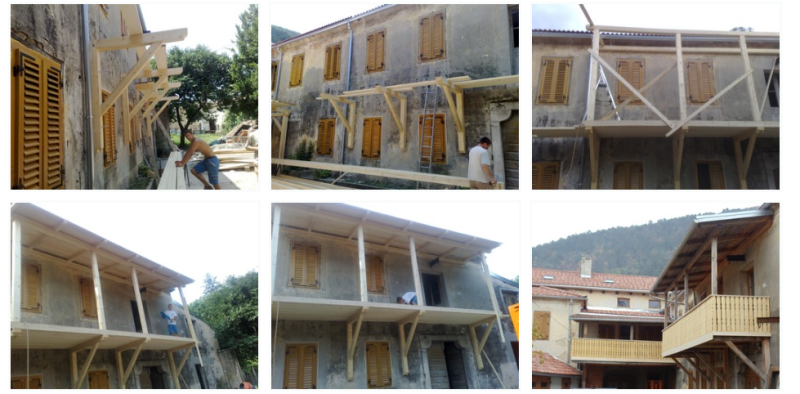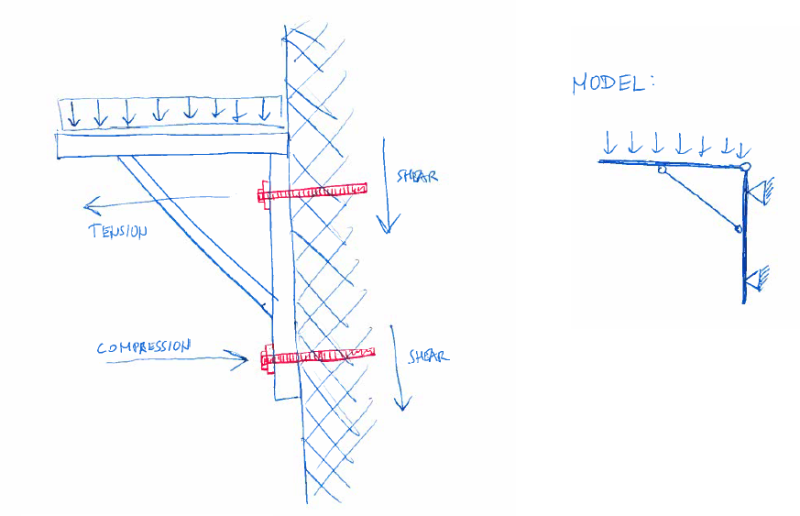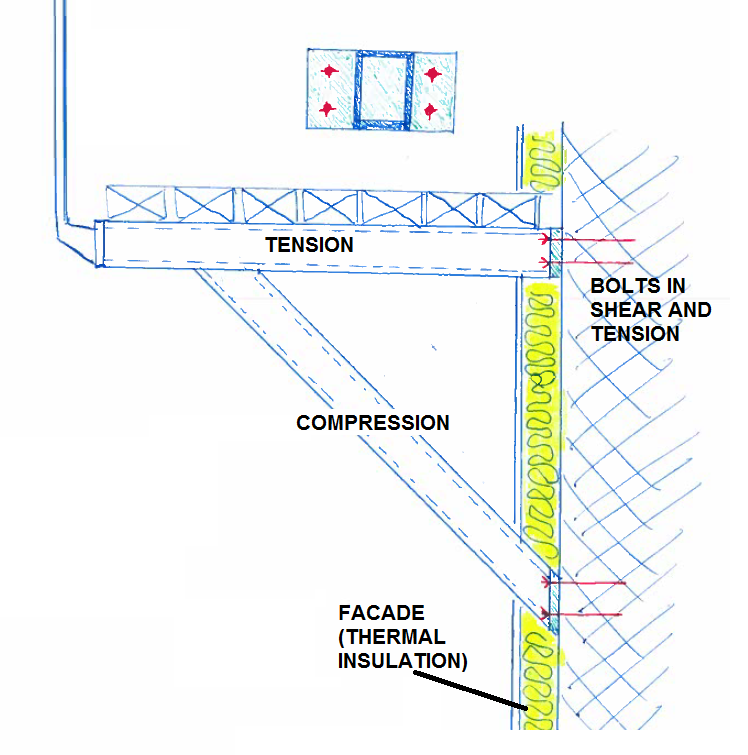greznik91
Structural
- Feb 14, 2017
- 186
Im designing timber balcony. It looks pretty simple but I havent done it before, so Im just looking for some confirmation...
Is my model alright? I did it based on photo below.
I will desing bolts on shear + tension (interaction) and check for pull-out force.
Also, do you think there should be more bolts, different locations?



Is my model alright? I did it based on photo below.
I will desing bolts on shear + tension (interaction) and check for pull-out force.
Also, do you think there should be more bolts, different locations?











